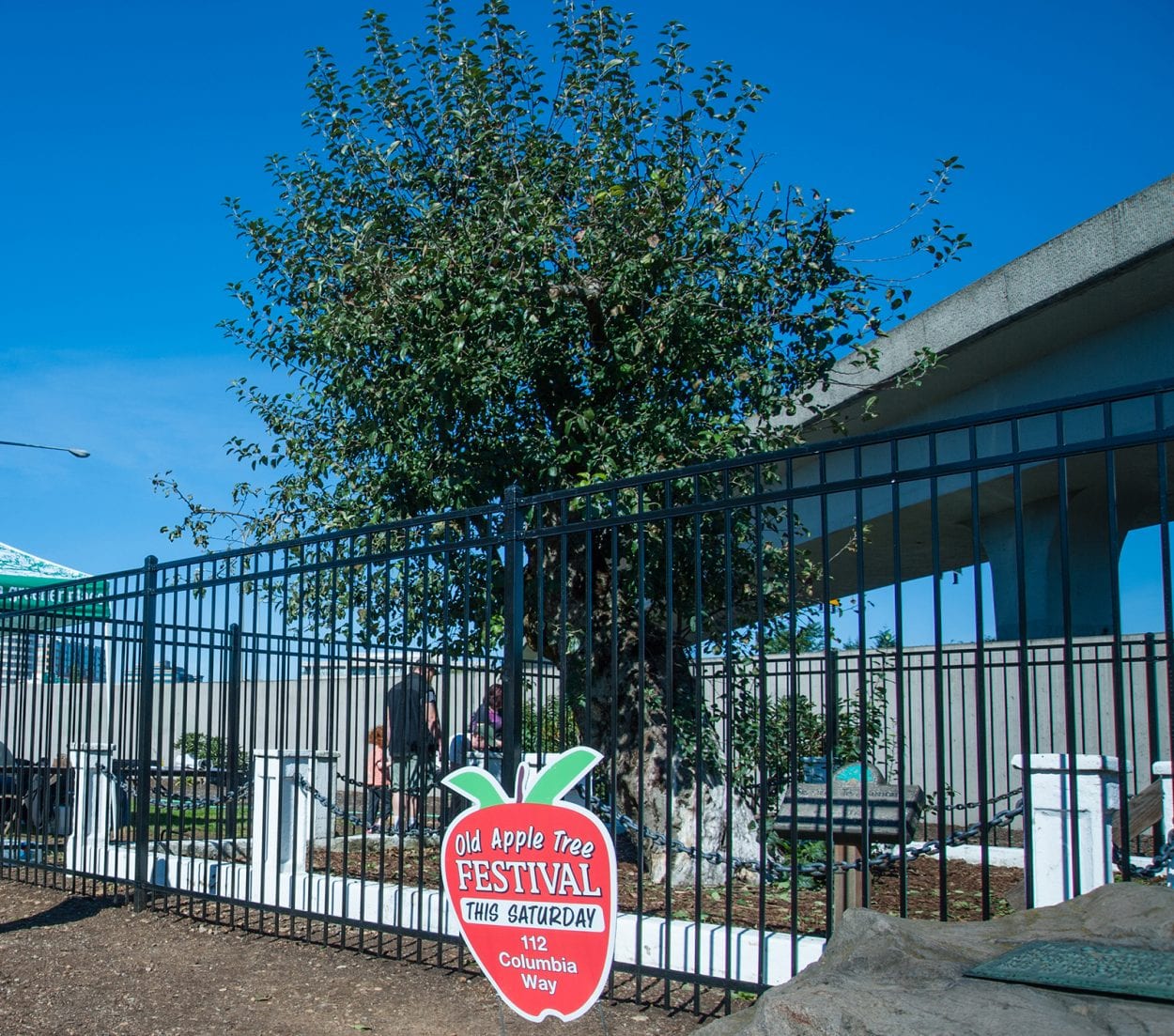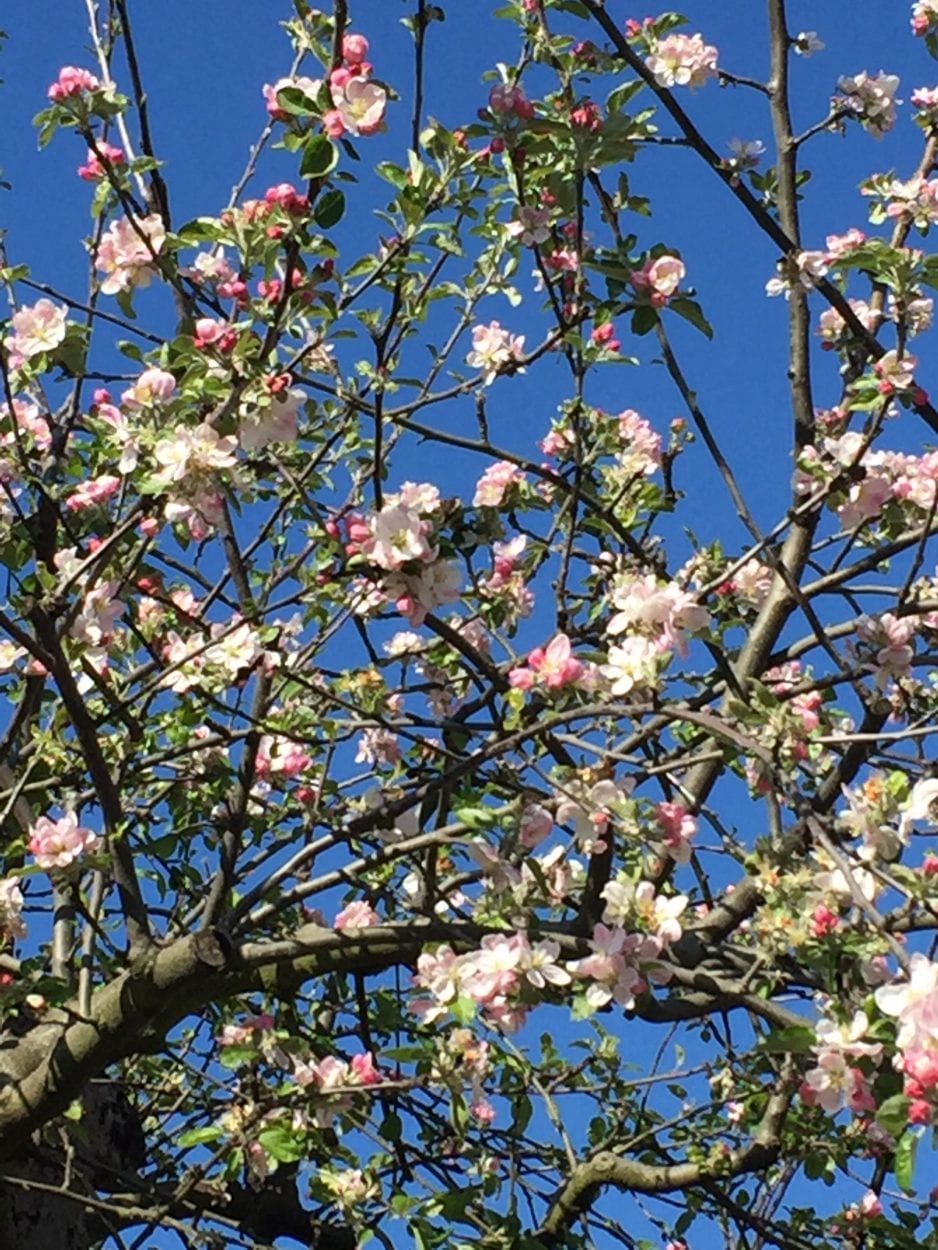This past week, dying leaves suddenly appeared throughout the tree, symptoms that sparked the city of Vancouver’s Urban Forestry staff to do a quick checkup on its health
It survived the most severe floods, winds, drought, ice and snow, but not 2020. For all practical purposes, Vancouver’s venerable Old Apple Tree has died at the age of 194.
This past week, dying leaves suddenly appeared throughout the tree, symptoms that sparked the city of Vancouver’s Urban Forestry staff to do a quick checkup on its health.

Arborists conducted a thorough evaluation and observed that the cambium layer of the tree, which serves as the arteries that transport water and nutrients to the canopy, had been cut off. Their assessment was that the tree appeared to have shifted slightly earlier this month, disrupting the cambium layer that keeps the tree alive. Add to that the hot weather earlier in the week, which pulled water from the leaves quickly, and the result was the sudden dry, shriveling leaves.
The Old Apple Tree has a significant spiral crack in the trunk that had been expanding over the last several years, leading to decay and rot in a large part of the tree trunk. Even during this time, however, the canopy (leaves and branches) of the tree were healthy and growing. The tree continued to flower and produce apples, as well.
With the help of the Old Apple Tree Research Team, the city has been planning for this day by nurturing several of the root suckers, which are now small trees growing around the Old Apple Tree.
The team has been meeting since 2009, and is comprised of professionals from Bartlett Tree Experts, which has donated services to the tree for years, The National Park Service, Joe Beaudoin, Arborscape Tree Care, and Charles Ray, the city’s Urban Forester. The Old Apple Tree Research Team will reconvene to plan for the management of the tree and next steps to assure its legacy lives on.
The Old Apple Tree served as a tangible reminder of the power of trees to bridge generations and provide continuity between the past and the future. Planted from seed in 1826 at the historical Fort Vancouver, the Old Apple Tree is considered the matriarch of the apple industry in Washington State. In 1830, it provided Clark County’s first apple harvest – one apple.

The long celebrated tree was witness to many, many historical events – including the influenza pandemic of 1918 – and has been featured in stories, photos and artwork. In September 2010, Robert Cromwell, Archeologist with the National Parks Service and Fort Vancouver, wrote a detailed history of the Old Apple Tree for the Northwest Cultural Resources Institute.
The Old Tree also lives on in offspring planted around the community. Cuttings obtained by arborists have been handed out to the public during the city’s annual Old Apple Tree Festival for many years. Plans for this year’s annual festival are still pending due to potential COVID-19 considerations.
Vancouver Urban Forestry invites the community to share stories and photos of the Old Apple Tree through Letters to Trees program.
For more about the Old Apple Tree and other tree information, visit the Urban Forestry webpage, or www.cityofvancouver.us/urbanforestry, or call (360) 487-8308.
Information provided by city of Vancouver.




